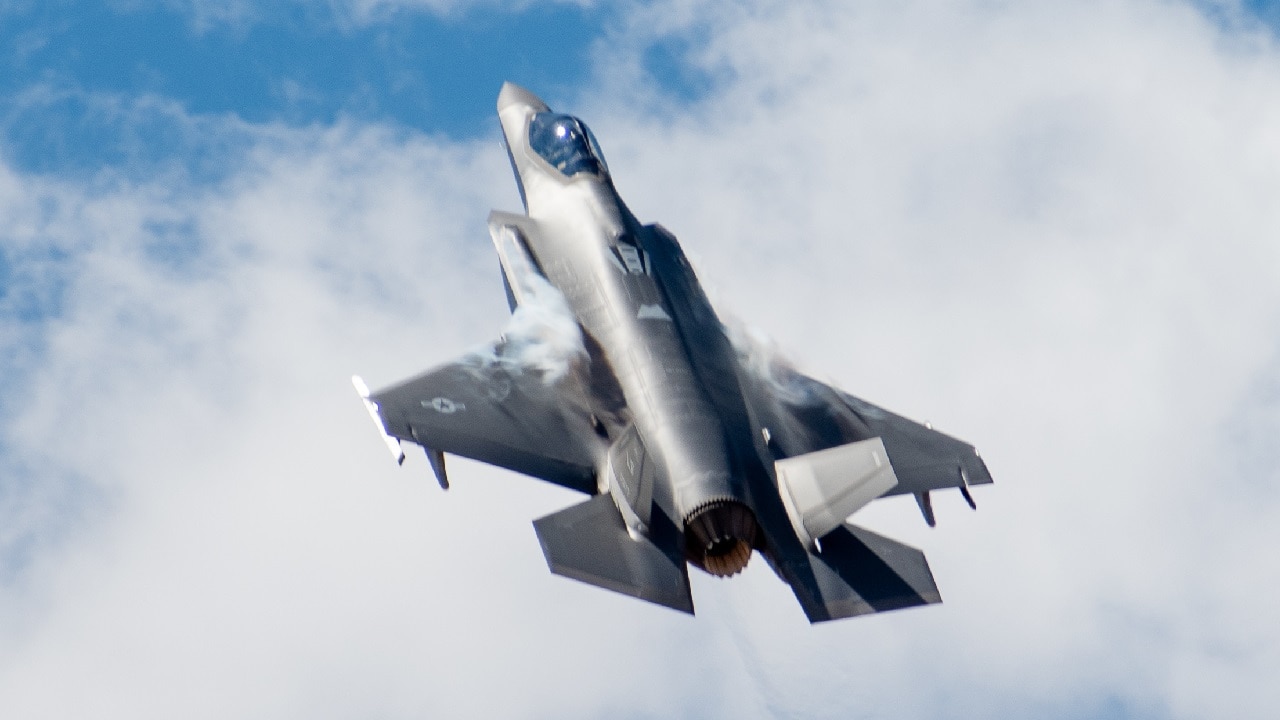The F-35 has become the most coveted tactical airframe across the globe, U.S. allies and adversaries alike hope to procure this nearly unstoppable fighter platform.
In fact, there are more of these fifth-generation jets flying for nations around the world today than all other stealth airframes across the planet. Just under 900 F-35s have been exported to date, a staggering number for such a relatively new fighter.
For decades, the U.S. monopolized air superiority. China’s new fifth-generation Chengdu J-20 platform was introduced in 2017, followed by several other stealth platforms.
While the race to develop and procure next-generation fighters is already well underway, the F-35 Lightning II remains arguably the most dominant fighter jet to ever fly the skies.
Introducing the F-35 Lightning II fighter
The Lockheed Martin F-35 Lightning II jet is truly a renaissance airframe, able to provide intelligence, surveillance, electronic warfare and reconnaissance capabilities.
Derived from the Joint Strike Fighter program, the fighter was a result of the manufacturing giant’s Skunk Works project which aimed to create an Advanced Short Take-Off/Vertical Landing (ASTOVL) for both the U.S. Air Force and Marine Corps.
The Joint Advanced Strike Technology program first emerged in 1993, following the cancellation of the Air Force’s Multi-Role Fighter and the Navy’s Advanced Fighter-Attack programs.
The Joint Strike Fighter program grew rapidly to include a cohort of nine nations, including the UK, Denmark, Canada, Australia and Turkey. Both Lockheed Martin and Boeing competed to achieve the JSP contract and in 2001, Lockheed was declared the winner.
Powered by the Pratt & Whitney F135 engine, the F-35 has a top speed of Mach 1.6. The fighter also sports an advanced sensor fusion which creates a single integrated image of the battlefield that improves the situational awareness of its pilot. The 360-degree Distributed Aperture System, coupled with long-range electro-optical targeting technology, allows the fighter to quickly identify threats.
As outlined in an early 19FortyFive piece, “Wargames using the F-35 as well as live fire exercises such as the Air Force’s Red Flag have shown that an F-35 can see and destroy large formations of enemy fighters from standoff distances where it cannot be “seen” or detected by an enemy. In this kind of scenario, which has been shown in several wargames, a single F-35 has proven able to see, identify, and destroy larger numbers of enemy airplanes without placing itself within a line of fire.”
What about the competition?
The F-35’s formidable characteristics combined with the international effort to achieve a Joint Strike Fighter program have led to the jet’s export in great quantities. Additionally, many European nations specifically were seeking an airframe to place their aging fleets by the end of the decade.
The timing of the F-35’s debut boded well for its spread throughout the continent. In fact, the sheer number of F-35s on the market has proven to be a critical measure against adversarial fifth-generation near-peers. Both China and Russia possess their own fleet of cutting-edge fighters, however, the amount of F-35s flying today far outnumbers these competitors.
Maya Carlin is a Senior Editor with 19FortyFive. She is also an analyst with the Center for Security Policy and a former Anna Sobol Levy Fellow at IDC Herzliya in Israel. She has by-lines in many publications, including The National Interest, Jerusalem Post, and Times of Israel.
From 19FortyFive
Footage Shows World War I Guns Being Used in Ukraine
‘Vacuum Bombs Destroyed’: Ukraine Footage Shows Putin’s Thermobaric Rockets Destroyed
BOOM! Ukraine Video Shows Precision Strike on Russian Air-Defense System

